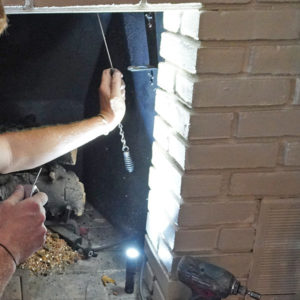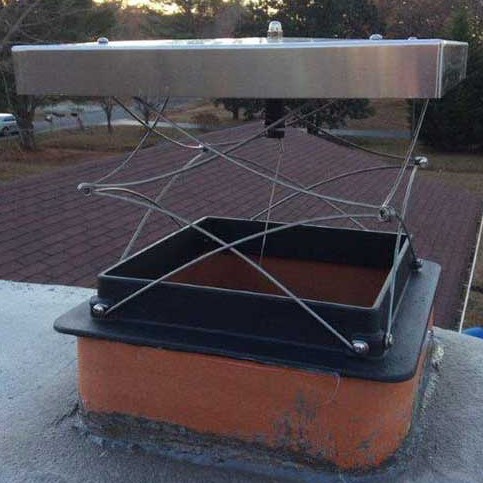Chimney Dampers and Their Important Functions
Chimney dampers are essentially unseen components of chimney systems, but they have great importance. A lack of understanding about how dampers are supposed to operate and what they do often leads to various issues that could be costly. Read on to learn what dampers are for, different types of chimney dampers, and when damper repair or replacement is needed.
 What are the Functions of Chimney Dampers?
What are the Functions of Chimney Dampers?
Chimney dampers have three primary jobs. First, they need to be opened before lighting a fire because dampers allow combustion gases to go up the chimney. Secondly, when the fireplace has grown cold, the damper needs to be closed with a tight seal. Otherwise, indoor conditioned air will escape through the chimney, causing utility costs to soar. Thirdly, in the absence of a chimney cap with mesh, the damper could prevent animals from entering your home.
Types of Chimney Dampers
Throat Dampers
Traditional chimney dampers are also known as throat dampers. They are located above the firebox. The important first step to starting fires is to first reach up and open the damper. One traditional method for opening throat dampers is by turning a knob or key. Poker dampers are also common, and they are opened by pushing the damper upwards and securing it with a notch in the damper’s “banana handle.”
Top-Sealing Dampers
Top-sealing dampers have become popular alternatives to throat dampers, which tend to warp. Top-sealing dampers are mounted on top of the flue. When closed, these dampers form a seal at the flue opening. A steel cable connects the damper to the inside of the firebox, where the top-sealing damper is either released to open it or secured to create a tight seal.
Woodstove Dampers
Metal stovepipes for heating stoves have dampers that have the additional function of controlling the amount of fresh air intake for the fire.
 Problems with Chimney Dampers
Problems with Chimney Dampers
Chimney dampers are prone to warp as a result of exposure to intense heat from fires. Chimney leaks often cause dampers to rust. As a result of rusting or warping, the damper may no longer form a secure seal. If you schedule an annual chimney inspection, which is recommended by fire safety experts, your chimney sweep will, among other things, let you know the condition of your damper. Qualified chimney sweeps will make maintenance adjustments, discuss damper repair, or, suggest a damper replacement, if needed.
The following are signs of possible damage to your damper that you may be able to identify on your own:
- The damper is noisy when opened or closed.
- Opening or closing the damper isn’t possible.
- Your fireplace is smoky.
- Crumbling debris or water drops down into the firebox.
- Your home is drafty.
- Small animals have invaded your home.
Contact Guardian Chimney Sweeps
Chimney damper issues are common problems, and the CSIA-certified chimney experts at Guardian Chimney Sweeps can help. If you’ve noticed signs of possible chimney damper damage or if it has been over a year since you last scheduled a chimney inspection, give us a call. You can reach us at any of the phone numbers below:
Toll-free: (888) 306-6069
Conroe: (936) 271-9781
Houston: (713) 401-2011

 Tap to Call Now
Tap to Call Now